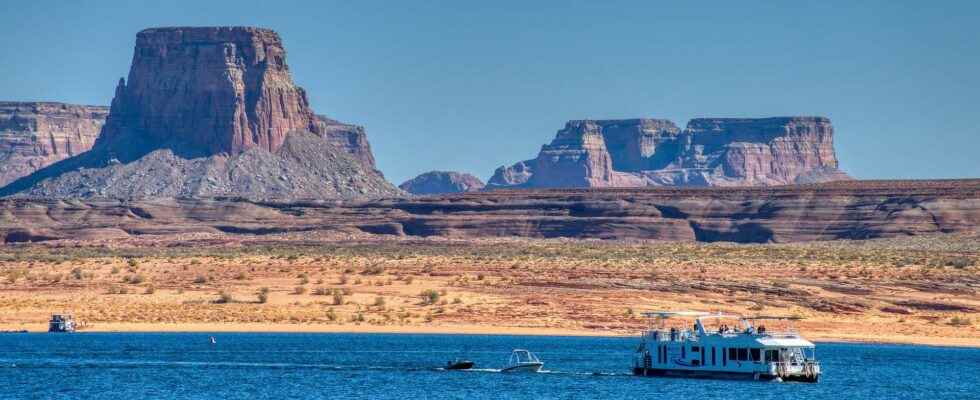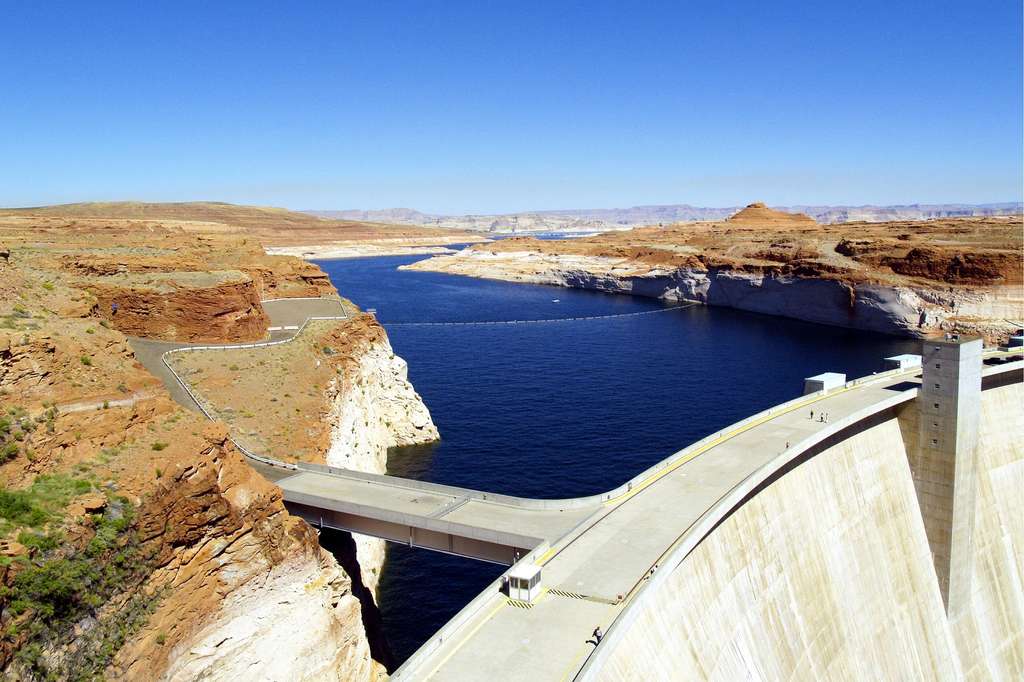You will also be interested
[EN VIDÉO] Relive 4,000 years of hydraulic dam history Dams have used high technology… for thousands of years. The first great agricultural societies, between the Tigris and the Euphrates, were already seeking to regulate irrigation. In this video, a time machine takes us to Mesopotamia at the time of Sumer and speeds into the future, to the surveillance drones of today.
the lake powell is a tourist hotspot located between Arizona and Utah, an essential stopover for travelers in the Great American West. But this artificial lake with colors unreal is also the second largest water reservoir in the United States when full. After decades of drought, the lake is currently at its lowest level never recorded since its creation in 1963.
Created on the Colorado River with the Glen Canyon Dam, Lake Powell stretches for 300 kilometers and provides water to 40 million Americans. It also irrigates 2.2 million hectares of cropland and generates more than 4,200 megawatts ofhydroelectricity. Last mid-March, the level of the lake dropped to 1,074 meters below sea level, unprecedented. Such a low level at this time of the year is all the more surprising since it generally reaches its annual peak between mid and late spring, at the time of the melting of the snows of the Rocky Mountains.
More than half of the United States in a state of drought
In question, the worst drought on record over the western United States for 22 years, since the beginning of the analyzes of theUS Drought Monitor. Precipitation in the January-March period is so low in the western United States that it is approaching record levels. The drought currently prevails over 61% of the American territory. Currently at only 25% of its capacity, the level of the lake is only a few meters from the “minimum energy pool”, the minimum level from which the barrage is able to producehydroelectric power. If the water continues to drop, it will also no longer be able to flow through the dam and this will cause supply problems for agriculture, population and biodiversity.
Interested in what you just read?

